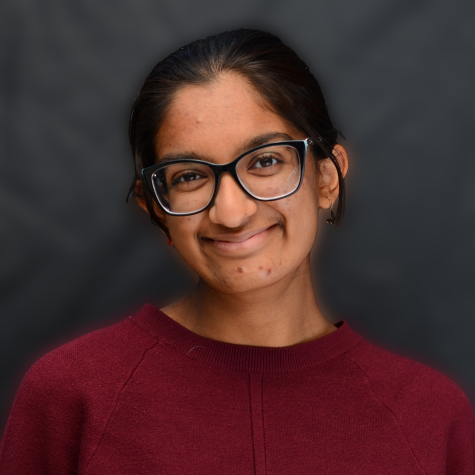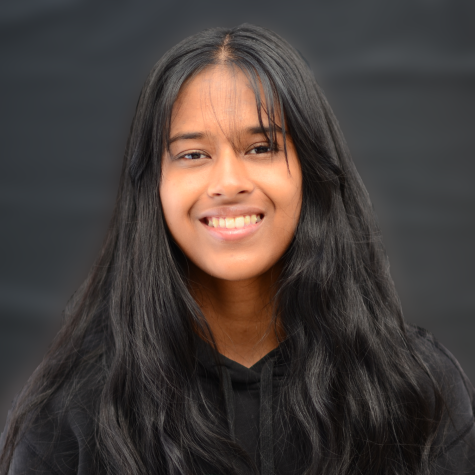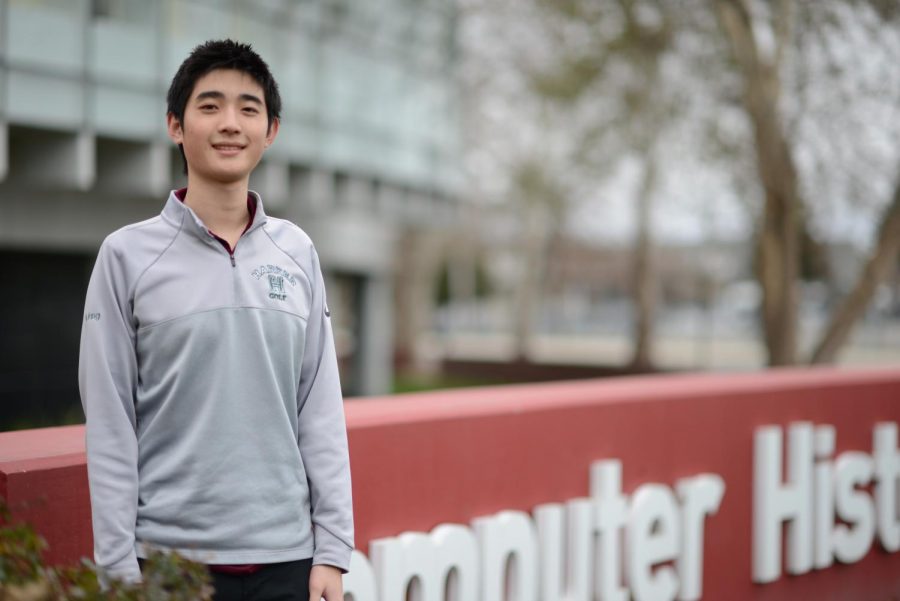Humans of Harker: Seeking common ground
N Wang explores his interests in the history of technology and golf
“The issue I see today is that pioneers aren’t really recognized. Do you know who invented the keyboard? I have no idea who did that. And we all use the keyboard today. So shouldn’t that be incredibly important? Shouldn’t we remember these things? I want to be the guy who makes people remember that. Remember why we have the things we have in the world, and how we got there,” N Wang (12) said.
Since he was a freshman, N Wang (12) has been creating a digital map of Silicon Valley with a specific purpose: sharing the Bay Area’s history. His vision is for the map to provide easier access to the sometimes-forgotten stories behind Silicon Valley’s innovation. Should someone want to research Steve Jobs, for example, the map points out the location of the garage where Apple started, the old buildings first used as headquarters, and even where the iPhone was first announced.
N’s interest in the hidden history of tech started at the Computer History Museum.
“We went there for a fourth grade field trip once, and I was like, ‘Wow, this is really interesting’. We focus so much on STEM with innovation and technology, but we don’t really know much about any of the inventors or pioneers of technology from the past,” N said.
His interest in the museum led him to meet Bernt Wahl, who pioneered mathematics’ chaos and fractal theory and offered to take N to NASA’s Ames Research Center, where they toured the airstrip, and N learned the center’s history. Inside one hangar, he found contents both surprising and unsurprising—planes, but vintage ones that had been abandoned. The paint used on the buildings had been so corrosive, no one longer developed or visited the hangar, leaving behind a treasure trove.
“We, as people who live in Silicon Valley, should be learning more about the history of Silicon Valley,” N said.
Having uncovered the drive to uncover these stories, he took on this four-year project, also founding a corresponding Silicon Valley History Club at Harker. Like the map, his club seeks to explore the forgotten stories behind the concrete history defining Silicon Valley today. For N, it is an avenue to express his deep concern for how history and the humanities are necessary for restructuring how Silicon Valley approaches the future of STEM.
“We’re always looking for the next thing now,” N said. “We’re making money, we’re changing the world. At the same time, we’re not remembering how we got there. How did we get to this point? And what ethical concerns are there going to be? We ran into this sort of issue in the past regarding technology, and we’re going to run into them again.”
The only solution to prevent this, for N, was to take a worldview that is informed enough and zoomed-out enough to allow him to explore both STEM and the humanities.
Close friend Utkarsh Priyam (12) noticed N’s ability to find common ground between seemingly disparate sides. The two became friends in sixth-grade Spanish class, and when they took AP Spanish together, Utkarsh saw N excel during in-class debates on different topics. Even with the additional challenge of presenting arguments in another language, N’s points of view always impressed Utkarsh.
“I always remember that he would always stand up and talk about everything. He knew how to make every single connection between the points we were arguing and how to apply those to the other arguments,” Utkarsh said. “He’s able to use these micro-connections between different aspects of different things that he has experience with and draw on what he already knows to figure out on the fly what he should do in newer circumstances.”
N applied this approach when his father began teaching him DJ-ing on vinyl. At N’s age, his father was a DJ, and he still keeps the equipment around to use occasionally. As N grew up listening to his father’s music, he became interested and tried to learn himself.
“Though I’m definitely still learning,” N said, “I’ve realized there’s a rhythm to the science and art to everything. And when science and art combine, it makes something really beautiful.”
N has realized through exploring that mixing songs requires a combination of intuition and following the rhythm of the beats.
“[The process] is the art of bringing two rivers together, into one, without creating some sort of distortion or a splash in the river. You don’t want people to be jarred, just to be having a little fun along the way. When you have the science part as your foundation, and you really dig deep on the art side, you create a beautiful song, a beautiful mix of songs,” N said.
Along with his relationship with his father, N treasures the connections he can find in his local community, in his hometown of Cupertino.
One of N’s most rewarding memories of Cupertino is from 2018, when a bill threatening the even distribution and density of housing gained traction due to misinformation. N decided to canvass in order to educate voters about the bill’s actual text and the other side of the story. He met his fair share of ‘No Solicitors’ signs but also a few surprises.
“When I knocked on one door, a woman was there with some tea,” N said. “She’s like, ‘Oh, dude, do you want some tea? I’d like to get better educated on the political situation!’ Because she frankly didn’t know that much because it’s such a local issue not seen on national TV.”
Canvassing another time, he met her again. “I helped her move out some furniture, and that was spontaneous, totally random,” N said. “But I really felt I really got to know who my neighbors were in the neighborhood rather than living there and not really knowing who you’re around and what opportunities your community can provide for you.”
Jason Lin (12) finds N’s ability to connect with others easily unique.
“N has many layers,” Jason said. “He’s fun on a shallow level, where he’s fun to hang out with. And on a deeper level, he has all these thoughts about things in the world, and he’s fun to talk with about them.”
Another close friend, Bryan Zhang (12), who has played on the golf team with N, appreciates the dedication N brings to every interaction.
“He is always willing to help me out,” he said. “Whether that’s to look at my swing, to record my swing or stuff like that. The overall process of working together, playing together with N has been a lot of fun.”
Both on and off the green, N is invested in helping others, specifically in how to make more information and opportunities available to them. N explained how an archaeological dig team had rebuilt the entire city they’d excavated using data and artifacts they had found.
“People can connect with people, can get into [the subject matter] with VR, and they’re experiencing that world, rather than reading,” N said, describing the creative approach. “Sure, some people like reading, though I know a lot of people don’t enjoy reading about things that they find boring. They can’t connect to it.”
That is N’s mission: to find more ways for people to reach across the perceived limits of their knowledge and connect with new information. He hopes his legacy will change people’s approach to innovation and learning.
“The issue I see today is that pioneers aren’t really recognized,” N said. “Do you know who invented the keyboard? I have no idea who did that. And we all use the keyboard today. So shouldn’t that be incredibly important? Shouldn’t we remember these things? I want to be the guy who makes people remember that. Remember why we have the things we have in the world, and how we got there.”

Trisha Iyer (10) is a reporter for Harker Aquila, and this is her second year on staff. In the articles she writes this year, she hopes to hone her photography...

Ritika Rajamani (12) is the Business Manager of the TALON Yearbook, and this is her fourth year on staff. This year she hopes to connect with our seniors...


















![“[Building nerf blasters] became this outlet of creativity for me that hasn't been matched by anything else. The process [of] making a build complete to your desire is such a painstakingly difficult process, but I've had to learn from [the skills needed from] soldering to proper painting. There's so many different options for everything, if you think about it, it exists. The best part is [that] if it doesn't exist, you can build it yourself," Ishaan Parate said.](https://harkeraquila.com/wp-content/uploads/2022/08/DSC_8149-900x604.jpg)




![“When I came into high school, I was ready to be a follower. But DECA was a game changer for me. It helped me overcome my fear of public speaking, and it's played such a major role in who I've become today. To be able to successfully lead a chapter of 150 students, an officer team and be one of the upperclassmen I once really admired is something I'm [really] proud of,” Anvitha Tummala ('21) said.](https://harkeraquila.com/wp-content/uploads/2021/07/Screen-Shot-2021-07-25-at-9.50.05-AM-900x594.png)







![“I think getting up in the morning and having a sense of purpose [is exciting]. I think without a certain amount of drive, life is kind of obsolete and mundane, and I think having that every single day is what makes each day unique and kind of makes life exciting,” Neymika Jain (12) said.](https://harkeraquila.com/wp-content/uploads/2017/06/Screen-Shot-2017-06-03-at-4.54.16-PM.png)








![“My slogan is ‘slow feet, don’t eat, and I’m hungry.’ You need to run fast to get where you are–you aren't going to get those championships if you aren't fast,” Angel Cervantes (12) said. “I want to do well in school on my tests and in track and win championships for my team. I live by that, [and] I can do that anywhere: in the classroom or on the field.”](https://harkeraquila.com/wp-content/uploads/2018/06/DSC5146-900x601.jpg)
![“[Volleyball has] taught me how to fall correctly, and another thing it taught is that you don’t have to be the best at something to be good at it. If you just hit the ball in a smart way, then it still scores points and you’re good at it. You could be a background player and still make a much bigger impact on the team than you would think,” Anya Gert (’20) said.](https://harkeraquila.com/wp-content/uploads/2020/06/AnnaGert_JinTuan_HoHPhotoEdited-600x900.jpeg)

![“I'm not nearly there yet, but [my confidence has] definitely been getting better since I was pretty shy and timid coming into Harker my freshman year. I know that there's a lot of people that are really confident in what they do, and I really admire them. Everyone's so driven and that has really pushed me to kind of try to find my own place in high school and be more confident,” Alyssa Huang (’20) said.](https://harkeraquila.com/wp-content/uploads/2020/06/AlyssaHuang_EmilyChen_HoHPhoto-900x749.jpeg)



